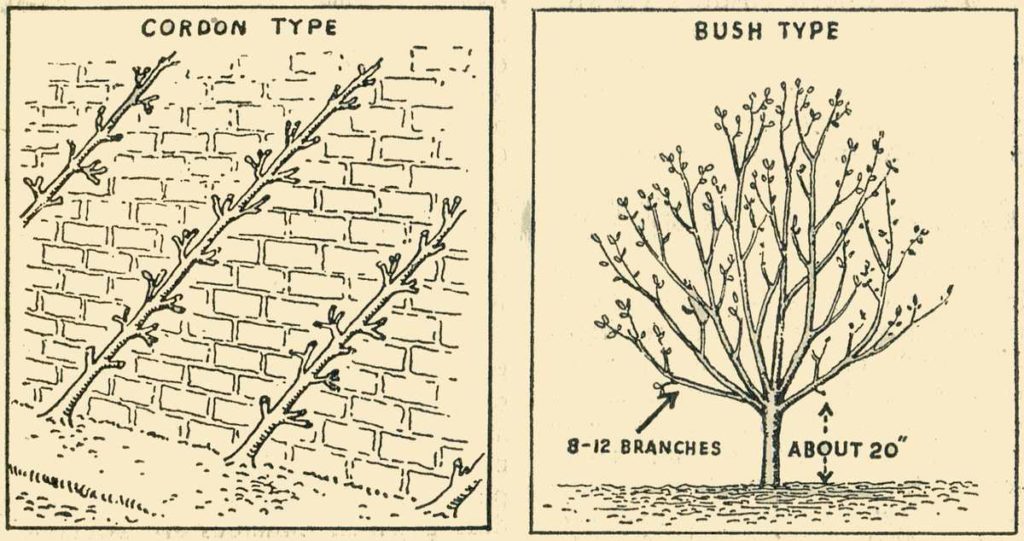FRUIT from the GARDEN
The shortage of fruit during the war has led many people to turn their minds in the direction of growing their own, especially apples. They have grown vegetables successfully, and feel they can grow fruit, too. Why not, if they have got the necessary space for a tree or two and perhaps some bush fruit ? So here are a few notes about apple growing.
The aim should be to plant the compact, restricted type of tree that is easy to handle, gives a quick return and takes up very little space. So keep to the cordon type or the bush tree.
The cordon has a single straight stem, furnished with fruiting spurs along its entire length. It is the type for planting against a wall or a fence. The bush tree has a stem of about 20 in. before branching takes place, and eight to twelve branches grow in the form of a cup, leaving an open centre. This form should be chosen when planting in the open garden.
A cordon tree should be at least two or three years old when you buy it, since a tree of this age will already be furnished with fruit buds. A bush tree should be about four years.
Be careful when you buy fruit trees. Apples are propagated by budding or grafting scions of the selected variety on special root-stocks. It is important that you should know this, for the root-stock has a marked influence on the growth of the tree, and so on the age at which it will start to bear. If the root-stock is vigorous, growth will also be vigorous, you will have to do much pruning and fruit-bearing will be delayed; if, on the other hand, the tree has been propagated on a weaker growing root-stock, such as Type IX, growth will be less strong and the tree will come into bearing at an early age.
Reputable nurserymen use root-stocks whose habit is known ; such root-stocks have been classified accordingly. So if your garden soil is in good heart and fertile, ask the nurseryman to supply apples on Mailing Type IX, which is a weak growing stock. If, however, your soil is light and poor, ask for the tree to be on Mailing Type II, a stock that produces a tree of medium vigour.
There’s been a lot of development in the field of rootstocks for fruit trees – largely driven by commercial, mechanical harvesting. The trend to growing columnar apples in pots on the patio.



